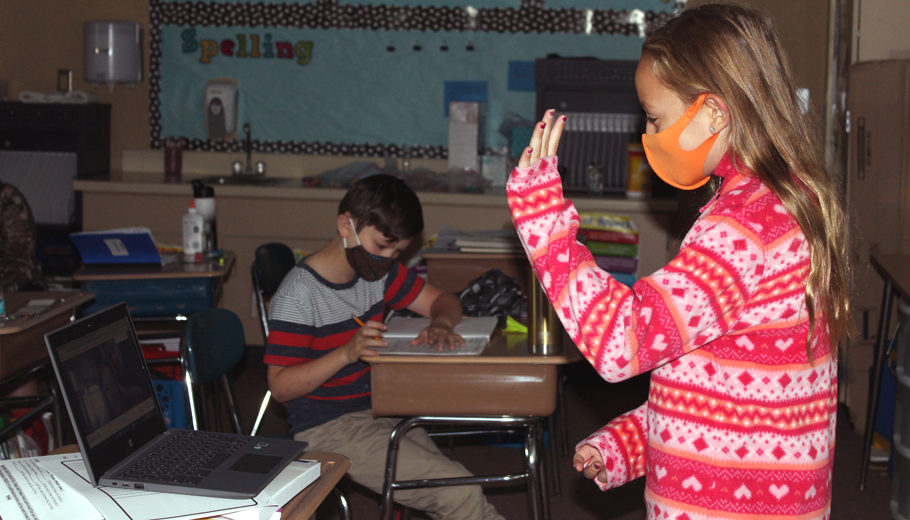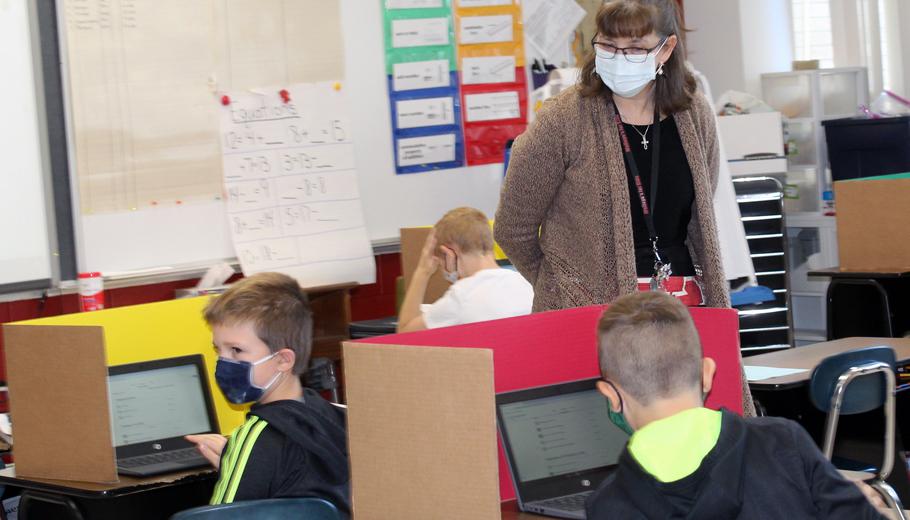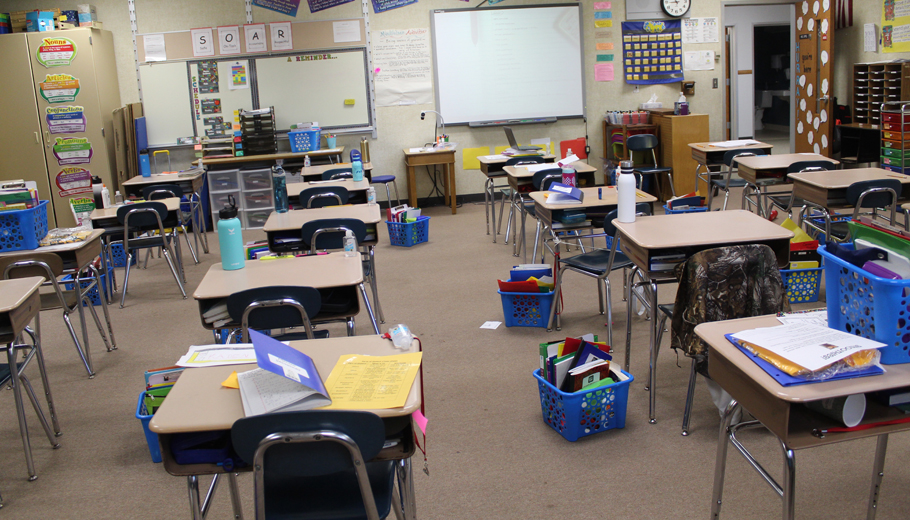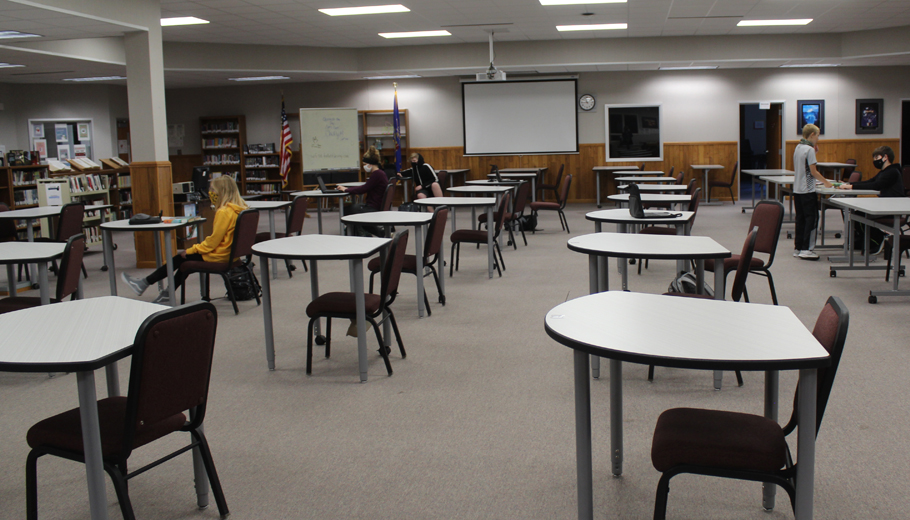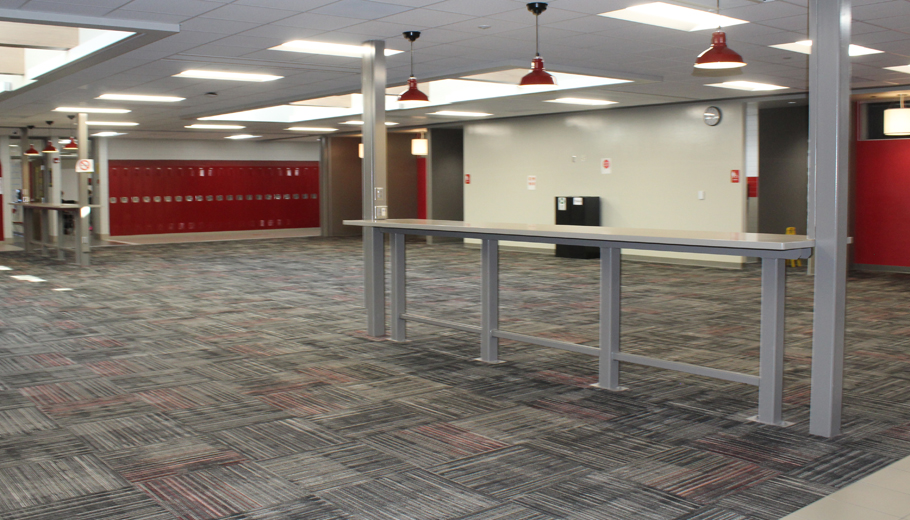More training, more prep time for Wega-Fremont educators
By Angie Landsverk
This is Jodie Knecht’s 31st year teaching, but it feels like her first one all over again.
“Even with teaching for many years, this is like year one,” she said.
Many teachers share the same sentiment as they adapt and adjust lessons in the midst of the COVID-19 pandemic.
Knecht is a third-grade teacher at Weyauwega Elementary.
She has taught in the district since the 1998-99 school year.
For teachers in the W-F district, preparation for this school year began last summer.
“Over the summer, they spent numerous professional development hours to prepare. Their goal was for the students to be here. They’re exhausted, but glad they’re here,” said John Ohlson.
He is the district’s new elementary principal.
Preparing
“The prep began with trying to learn as much technology as possible,” said Knecht. “We knew we were going to use Google Classroom, so I decided to get certified.”
Other teachers became certified as well.
“With the anticipation of every student receiving a Chromebook, we knew that the school year was going to look different than ever before,” said Jodi Alix. “Staff embraced the change, diving into professional development to prepare for the best use of technology. The preparation was to help ensure success in presenting content face to face, in a blended model or virtually, should the need arise.”
Alix is the district’s middle and high school principal.
She said after hours or preparation and planning for safety and the delivery of the curriculum, the middle and high schools started the school year with excitement.
“Currently, we have a hybrid model, with students here two days a week, then virtual Wednesdays and a different group here on Thursdays/Fridays,” Alix said.
Some families decided a 100% virtual model would best meet their needs this school year.
Those students are using their technology to log in and complete daily work and assessments through a contracted curriculum.
For students being instructed through the hybrid model, there is a mix of in-person and virtual instruction.
“The teachers are adapting and making learning interactive through Google Meets, where students log in and follow along with the classroom teacher as well as with their peers,” she said. “While it takes a different mindset and therefore different planning, the staff is focused in their pursuit of student learning.”
Teaching
Connie Peterson has been teaching for 25 years.
She is the middle and high school computer science teacher.
“The instructional delivery is so different,” Peterson said. “I almost feel like a new teacher again. There’s a learning curve for teachers and students.”
For students learning virtually, “being on time for the camera is just as important as being on time for school,” she said.
Managing students on the other side of the camera is difficult, Peterson says.
She wants to make sure her students are engaged, productive and contributing.
With the middle and high school students in the hybrid model, Peterson said it is “very time consuming to create and modify lessons that can be pushed out to the Chromebook.”
She encourages her students.
With her middle school students in particular, she tells them to convey when they need help.
When students are learning virtually, the message is that things need to look the same.
“They’re just sitting in a different chair,” Peterson said.
She has talked to middle school students about posture and looking at the camera when learning from home.
Peterson must get attendance for every student at home.
She responds to individual questions students email her.
Peterson tells students that if a teacher responds to their emails outside of normal school hours, they should thank that teacher.
Prep work
“There’s twice as much prep work, because everything has to be reformatted or retyped to teach digitally,” she said. “There’s definitely two to three times more prep time.”
The staff is resilient, Peterson said.
“The resiliency is shown day in and day out. Cars are here early and late,” she said. “I credit the staff for going above and beyond to meet the needs of all kinds of learners.”
Ohlson said the amount of work for the teachers is astronomical.
Many teachers arrive at school by 7 a.m. and leave around 5 p.m.
Week nights and weekends are spent doing prep work as well.
Knecht said they are always trying to improve and learn how they can best help the students and support them.
“There’s always that mental planning, the constant what ifs, what comes next,” said Sarah Sippel, who teaches fourth grade at Weyauwega Elementary.
Teachers are exhausted, but happy to be back in the classroom.
In the W-F district, instruction remains in person for the elementary students.
Sippel said the beginning of the school year was about teaching the students how to log in to their Chromebooks.
“There’s been a lot of learning about how to use a Chromebook,” she said.
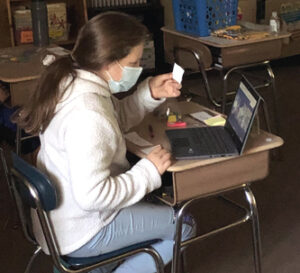
Submitted Photo
Students
Teachers are impressed by their students.
“We’ve been working hard to use technology, primarily Google Classroom,” Knecht said. “We’re learning a lot of it together.”
She said the goal has been to help build the confidence of the students to get into Google Classroom.
Logging in with their full email addressess and passwords was a big deal for the students, she said.
Since then, her students have learned how to do much more so if they do have to learn from home, they can show Knecht what they are doing.
“They’re only 8 years old,” she said. “Every day, it seems they find a new tool and together we explore that.”
Mary Pope says her fifth-grade students at Weyauwega Elementary are doing well learning technology.
The teaching staff is great helping each other, she said.
Pam Piencikowski teaches fourth and fifth grades at Fremont Elementary.
This is her 10th year teaching.
She is glad to be an empty nester, as she described teaching as “all consuming” right now.
The school year began with reviewing what students learned last spring before schools closed.
Piencikowski is focusing on her students and their needs.
She believes her students are now well equipped to do what they would need to if instruction became virtual.
“My students are outstanding,” Piencikowski said. “I’m so proud of them.”
One student told her he will do anything to stay in school.
Sippel complimented the parents for doing a good job of keeping their children home when they are not feeling well.
Piencikowski said the students want to be in school.
“It’s been a great start to the year,” she said.
The administration boosted the confidence of the teachers, showing them they are not in this alone, she said.
“We’re going to get through this together,” Piencikowski said. “It’s really neat to be part of such positivity.”
New looks
Spaces in the schools look different.
Peterson’s classroom is in a new room this year.
The move was necessary to spread the students out.
In the middle and high schools, a bell rings three minutes before the pass times.
That is disinfecting time before the next group of students arrives.
There are marks on hallways showing students how traffic flows.
“At first they walked with arms apart,” Knecht said. “Now they focus on the person in front of them and adjust their speed.”
Within the classroom, teachers are unable to use some of their teaching methods and strategies for group work.
Knecht has added movement breaks into the school day for transitions.
Piencikowski sets a timer every 30 minutes for water breaks.
“They all pull down their masks, have a drink and pull them back up,” she said.
As Ohlson walked down a Weyauwega Elementary hallway, he noted the artwork on a bulletin board.
“We want the building to feel normal,” he said.
Ohlson says the teachers are unsung heroes.
The teachers are proud of their students.
“They’re highly engaged with technology and all they can learn from that,” Knecht said. “They’re still engaged, just in a different way.”
She said, “It is exhausting, but yet there’s a deep sense of pride for each one of these children. We need as much reassurance and self confidence, and they’re giving it right back.”
The students are resilient.
“I’m thankful for the opportunity to be with them,” Knecht said. “Even in the difficult times, they are the bright spot.”

